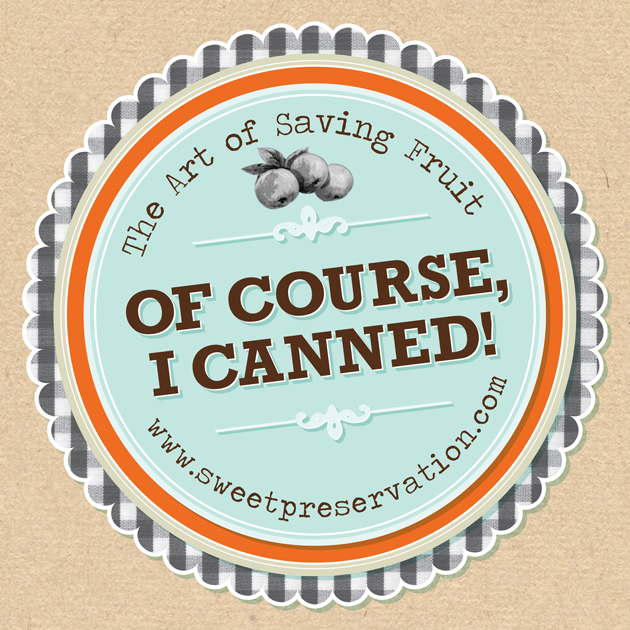Sweet Corn Relish
 Thursday, September 15, 2011 at 9:42AM
Thursday, September 15, 2011 at 9:42AM I don't know where I first had this; I don't remember anyone in my family making it. I just know that I was raised in the Wenatchee Valley and ate a lot of fresh-picked sweet corn when I was growing up. Now when my hometown friends visit us here in Seattle in the late summer, they know to bring me plenty of sweet corn. I always set a pot of water to boil right away so I can eat a couple ears with butter, salt & pepper, but I set some ears aside for corn relish too. Putting up corn relish in shelf-stable jars means I can enjoy the sweet sun-kissed crunchy goodness of corn all winter long.
Makes approximately 6 pint jars
- 12 ears of fresh sweet corn, husked & washed (about 9 cups of kernels)
- 1/2 head of cabbage, chopped (about 3 cups)
- 1 onion, chopped (1 cup)
- 1 bell pepper, chopped (1 cup)
- 1 red bell pepper, chopped (1 cup)
- 2 stalks of celery, 1/2'' slices (1/2 cup)
- BRINE
- 1 1/2 cups apple cider vinegar
- 1 1/2 cups distilled white vinegar
- 1/2 cup white sugar
- 1/2 cup brown sugar
- 1 TBS sea salt, plus extra if desired
- 1/2 tsp celery seed
- 1/2 tsp yellow mustard seed
- 1/4 tsp ground turmeric
- 1/4 tsp ground cumin
- Pinch of black pepper, if desired
Note: Prepare canning jars before starting your preserving project.
1.) Cut kernels of corn from ears using a sharp knife. Some people use a Bundt pan for this. (Place one end of ear upright/vertically in the hole in the center of the Bundt pan with one hand, cut kernels off with other. Corn kernels will accumulate in pan.)
2.) Combine ingredients for brine in a large heavy-bottomed pan over medium high heat and bring to a boil, stirring to make sure the sugars have dissolved and aren't sticking to the bottom of the pan.
3.) Add all of the prepared vegetables to the brine, and bring back to a boil, stirring well to combine.
4.) Reduce heat to a strong simmer. Continue cooking, stirring occasionally, for 15-20 minutes. Taste and add salt if needed.
5.) If you aren't going to "put up" your corn relish, it is now ready to eat, but most people prefer it chilled overnight first to allow the flavors will blend. Simply let the corn relish cool then ladle into jars with tight-fitting lids and store in the refrigerator for up to one month.
OR
6.) If you'd like to keep this Sweet Corn Relish in your pantry, keep the mixture warm, then using a wide-mouth canning funnel ladle or spoon corn relish into hot pint-size jars, leaving 1/2" headspace.
7.) Release any trapped air bubbles by carefully running a chopstick or other non-metallic utensil around the edges.
8.) Wipe rims clean with a damp paper towel.
9.) Set lids atop jars and screw on bands until fingertip-tight.
10.) Place jars on a rack in a canning kettle or large stockpot, making sure jar tops are covered with at least 1" of hot water. Cover with a tight-fitting lid, bring to a boil and process in a Boiling Water Bath for 15* minutes. Turn off heat, remove lid and let jars rest for 5 minutes in the kettle.
11.) Remove jars from kettle using jar-lifter tongs and place on a towel on your kitchen counter, preferably in a draft-free place.
12.) Let rest for 24 hours, then check for proper seal before storing. If jars lids seal*, store them in a cool, dark place for up to one year.
Note: Check lids for a proper seal by pressing down on the middle of the lid with a finger or thumb. If the lid stays down, it is sealed and will easily keep for up to one year in a cool dark place. If the lid springs up when you release your finger, the lid is unsealed. Place unsealed jars in your refrigerator and eat within 3 months, or within one month after opening.
*0-1000 ft: process 15 minutes
1,001-6,000 ft: process 20 minutes
Above 6,000 ft: process 25 minutes
 Brook Hurst Stephens | Comments Off |
Brook Hurst Stephens | Comments Off | 







